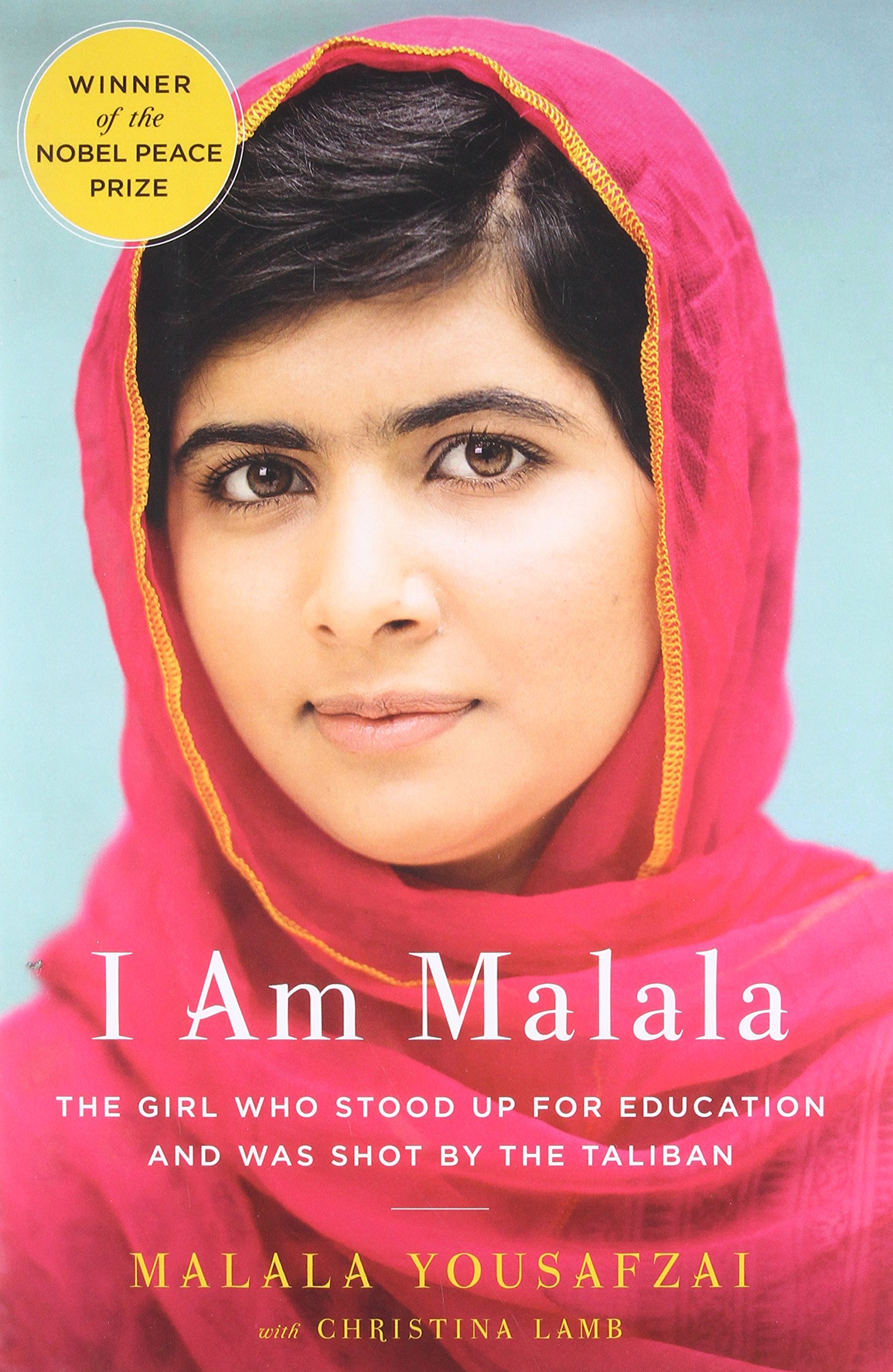TITLE: I Am Malala: The Girl Who Stood Up For Education and Was Shot By the Taliban
AUTHOR: Malala Yousafzai with Christina Lamb
330 pages, Little Brown, ISBN 9780316322423 (paperback)
DESCRIPTION: (From the back cover): When the Taliban took control of the Swat Valley in Pakistan, one girl spoke out. Malala Yousafzai refused to be silenced and fought for her right to an education. In October 2012, when she was fifteen, Malala almost paid the ultimate price. She was shot in the head while riding the bus home from school, and few expected her to survive. Instead, Malala’s heroic recovery has taken her on an extraordinary journey from a remote valley in northern Pakistan to the halls of the United Nations in New York. At sixteen, she emerged as a global symbol of peaceful protest. A year later she became the youngest recipient ever of the Nobel Peace Prize.
MY RATING: 4 out of 5 stars
MY THOUGHTS: I’ll admit, I have a hard time writing in-depth reviews of memoirs. Who am I to judge the authenticity of an author’s recounting of their own life? But as Malala’s memoir is one of the books I chose for this year’s To Be Read Challenge, and as that challenge requires me to post a review of each book, I’m going to make the attempt.
The first thing to note is that while this is a memoir, Malala tells more than just her own story. I’ve seen some complaints in other reviews that she effectively turns herself into a subplot for most of the book, spending so many pages on Pakistan history in general, the history of the Swat Valley in particular, and her family’s history in specific. My take-away, as someone who really was not familiar with Pakistan’s history or geography, is that it was vital for Malala to help people like me understand why her world was as it was – things like what happened to Malala do not happen in a vacuum. Understanding the culture surrounding the event, and especially the upheaval that culture has been experiencing not just politically but geologically (earthquakes, flooding, mudslides), made it easier to understand the event itself and its aftermath. No, this is not a textbook on Pakistan history, but Malala gave me enough detail that I wasn’t completely lost as to the socio-political attitudes around her.
Not surprisingly, Malala is at her most passionate when she’s writing about the cause that matters to her above all else: education for all. When she’s talking about the Taliban shut-down of schools, or her first sighting of illiterate children scouring garbage heaps for something to sell just to be able to eat, or even her mother’s struggles with learning to read and write, her voice is clear and her call for change is compelling. The portions of the book that do deal with Malala’s day-to-day life and schooling prior to the shooting are perhaps the least interesting to read: she talks about friendships and her relationships with her brothers a bit more dispassionately, almost as if someone (co-author Christina Lamb, perhaps) told her the book needed more slice-of-life to make her seem like a “real” kid and she included them grudgingly. I find myself wishing that she’d been able to directly include the reports about life under the Taliban that she wrote under the pen name Gul Makai; those might have lent a different view to the everyday-life sections of the book. Even Malala’s descriptions of what happened after the shooting are a bit clinical, which makes sense given how little of it she actually remembers.
The final chapters, about her new life in England and how she wishes to return to Pakistan, bring the passion back to Malala’s voice. She renews her call for education for all, for an end to the Taliban’s bombings of schools and other terrorist acts, and in these final pages it’s easy to see the effect all of this has had on her. I cannot imagine, at sixteen or sixty, being told you can never return to a place you loved, and that the immediate family you have with you are likely the only people from your childhood you will ever see again.
My preferred method of “reading” memoirs lately is in audiobook form, when narrated by the author. So I also have to wonder if I’d feel differently about the levels of passion/interest if I’d been able to hear Malala read her own words.
This is the second book I’ve read this year for the To Be Read Challenge.
